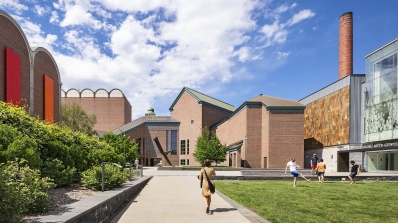Past Exhibitions
The impetus for this exhibition, which focuses on the Hood Museum of Art’s Inuit collections and celebrates Dartmouth’s long involvement in Arctic Studies, is the International Polar Year 2007-2008. Thin Ice explores traditional Inuit life through the nineteenth- and early-twentieth-century art and artifacts that indigenous Arctic peoples used to survive within this challenging environment. With the understanding that the Arctic environment is undergoing rapid transformation from climate change and the significant melting of sea ice, the exhibition highlights the impact of such change on Inuit ways of life and their relationship to the region in which they live. An illustrated catalogue accompanies this exhibition.
Lines of Text
The Eye of the Beheld
Art and/as Violence
GAWU
El AnatsuiThis inspiring exhibition of metal "tapestries" and other sculptures by El Anatsui, one of Africa's most powerful contemporary artists, celebrates Africa's rich artistic and cultural heritage. El Anatsui uses found objects such as metal liquor caps and other discarded materials to create spectacular metal cloths, including Hovor, which the Hood Museum of Art recently acquired, and two recently completed works that will be exhibited for the first time. The works in this exhibition references broader concerns about the adverse affects of globalization, consumerism, and waste. Organized by the Oriel Mostyn Gallery in North Wales, United Kingdom, this is El Anatsui's first solo exhibition to travel the United States.

